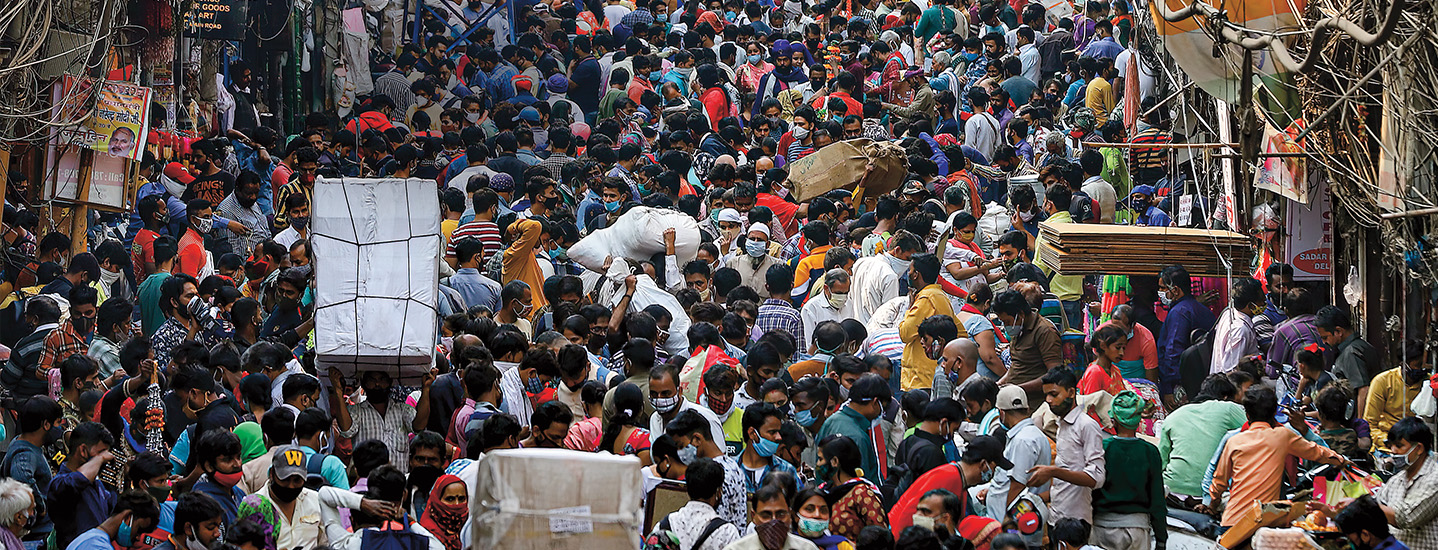For centuries, China has had more people than any other place on Earth. But that East Asian giant is about to lose its top spot.
New projections from the United Nations (U.N.) show that India is likely to surpass China as the world’s most populous country in 2023, with a population of more than 1.44 billion people. After that, China’s population is projected to decline, while India’s will continue to climb during the next few decades (see graph below).
The South Asian country’s growth reflects the planet’s. Overall, the U.N. report says, the global population continues to increase at a rapid pace. It has more than tripled since the mid-20th century and could exceed 10 billion people by 2059.
Population growth is not necessarily a good thing. The more people a country has, the more it has to care for. Overpopulation can put a severe strain on a nation’s economy and lead to widespread extreme poverty—a challenge India already faces. According to the World Bank, in 2017 more than 20 percent of Indians lived on less than $1.90 per day.
For centuries, China has had more people than any other place on Earth. But that East Asian giant is about to lose its top spot.
New projections from the United Nations (U.N.) show that India is likely to surpass China as the world’s most populous country in 2023. Its population will then be more than 1.44 billion people. After that, China’s population is projected to decline. But India’s will continue to climb during the next few decades (see graph below).
The South Asian country’s growth reflects the planet’s. The U.N. report says that overall, the global population continues to increase rapidly. It has more than tripled since the mid-20th century. It could be more than 10 billion people by 2059.
Population growth is not necessarily a good thing. The more people a country has, the more it has to care for. Overpopulation can put a severe strain on a nation’s economy. It can also lead to widespread extreme poverty, a challenge India already faces. In 2017, more than 20 percent of Indians lived on less than $1.90 per day. That is according to the World Bank.

